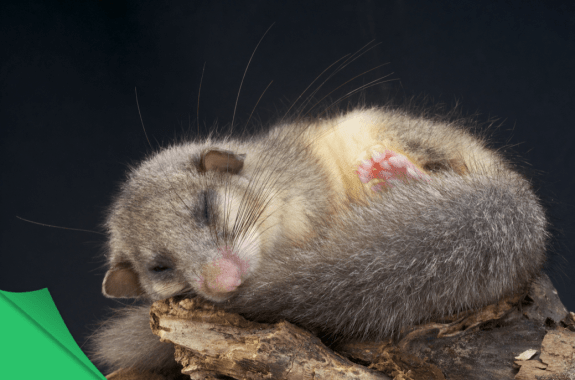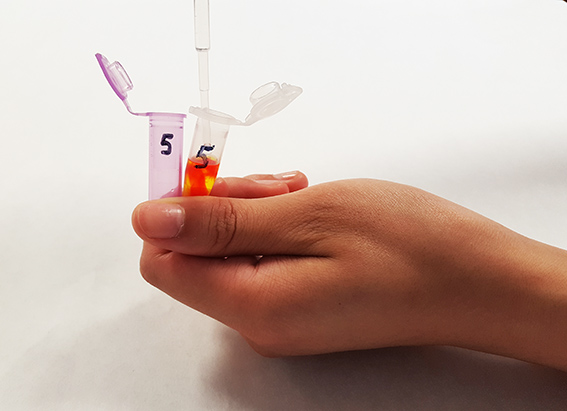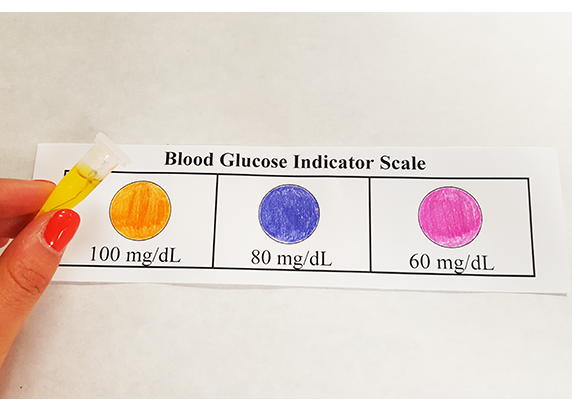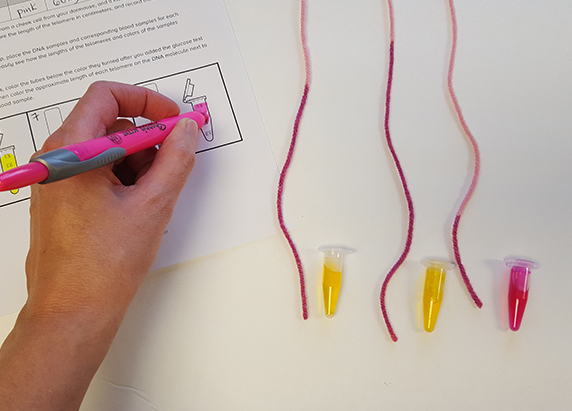Grade Level
9-12
minutes
1- 2 hrs
subject
Life Science
Activity Type:
DNA, telomeres, environmental factors, hands-on investigation
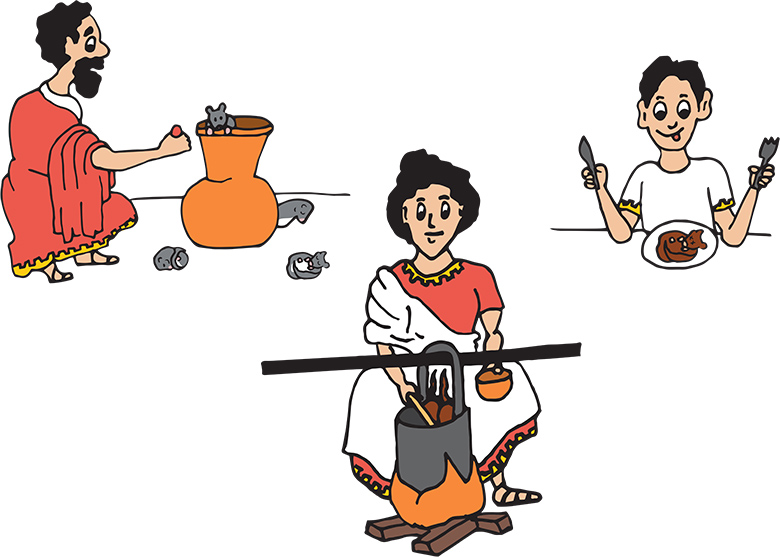
What do you see, think, and wonder about this cartoon?
Are you an educator? See the Educator’s Toolbox for worksheets and a Materials Prep Guide for this resource.
Have you ever heard of the edible dormouse (Glis glis)? It’s a rodent found predominantly in Western Europe, in deciduous forests where it feeds primarily upon berries, fruit, seeds, and nuts. Despite what its name may suggest, the edible dormouse is not a “true” mouse (family Muridae). It belongs to a separate family (Gliridae), and is more squirrel-like in appearance and size.
But you can eat edible dormice. Notably, ancient Romans snacked upon them, usually with a drizzling of honey and poppy seeds. Today, however, only a small subset of Europeans dines on these rodents.
These days, most people consider edible dormice to be a nuisance, because they frequently hibernate in attics and gnaw on electrical cables, posing a fire risk. But to scientists, they’re a boon. The species has an extremely long lifespan for its size—a trait that intrigues researchers who study aging.
Lifespans Of Different Animals
Pause for a moment and think about animals with long lifespans. What comes to mind?
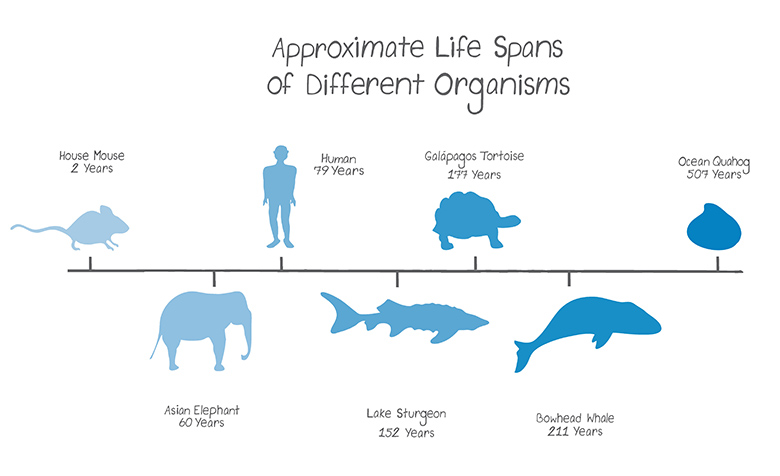
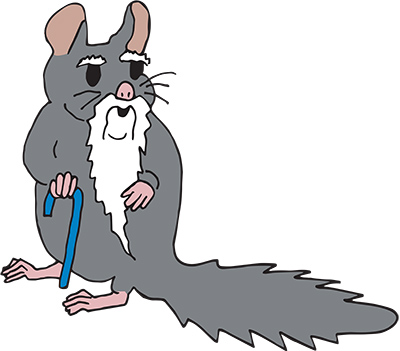
The prize for the longest-lived organism goes to a species of clam called the ocean quahog, which can live for more than 500 years! The edible dormouse’s lifespan doesn’t come close to that number, but for a small rodent, you might be surprised at how long it lives, especially in comparison to a typical house mouse, which has an average lifespan of just a couple of years.
How long do edible dormice live?
Edible dormice can live up to 13 years, making them the “Methuselah ” of small rodents. Why do they live so long compared to some of their cousins?
Let's explore what’s happening inside of a cell.
Research suggests that the edible dormouse lifespan has something to do with a section of its DNA called the telomere. To better understand why, let’s brush up on some DNA basics.
DNA is a molecule found in cells. It contains the instructions necessary for an organism to develop, survive, and reproduce. Your DNA is what makes you unique—it’s what distinguishes you from a dog, a mosquito, and every other species out there. When an organism reproduces, it passes at least some of its DNA on to its offspring, which is why DNA is called the “molecule of heredity.” Each DNA molecule is packaged into a structure called a chromosome.
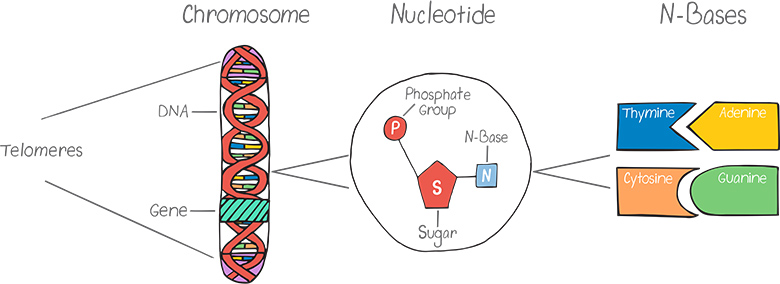
DNA is comprised of building blocks called nucleotides, which are arranged into two interlocking strands. Think of a ladder that spirals, and that’s kind of what DNA looks like; scientists call this shape a double helix.
Each building-block nucleotide consists of three subunits: a sugar, a phosphate group, and what’s known as a nitrogenous base (because it contains the element nitrogen). In DNA, there are four different kinds of nitrogenous base: adenine, thymine, cytosine, and guanine. Bases pair together through chemical bonds, which is how the two strands of the DNA double helix connect to one another.
Many of the nucleotides that make up DNA are arranged into specific sequences, called genes, that encode information for making proteins. After water, proteins are the second most abundant type of molecule in the body, and they’re critical to almost all cellular functions. Genes can range from a few hundred nucleotides to millions of nucleotides in length.

Not all nucleotides are arranged into genes, however. For instance, in eukaryotes (that is, organisms with cells that have a defined nucleus), the ends of a DNA molecule contain repeating sequences that don’t code for anything. Called telomeres, these segments are like protective caps for DNA, kind of like the plastic aglets that protect the ends of shoelaces.
What happens to DNA when cells divide?

Telomeres serve an important role during cell division. When a cell divides, it makes a copy of its DNA for a new cell. But each time DNA replicates, the ends of the molecule shorten. Telomeres help keep genes intact by weathering away first. But telomeres can also erode, and then genes begin to shorten as well. Without all the nucleotides present in a gene, protein production within a cell falters. As telomeres shorten, cells age and eventually stop functioning properly, which leads to cellular death, or apoptosis.
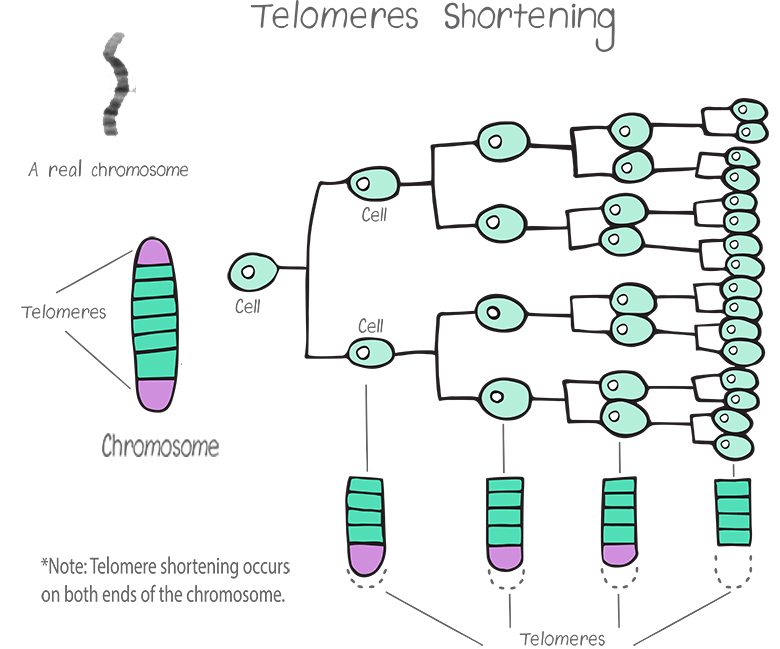
Is there a connection between telomere length and lifespan?
How do the telomeres of edible dormice compare to those of other rodent species?
Pretend you’re a molecular biologist. Your job is to observe the telomeres of edible dormice and a related rodent species from Europe collected from the field. Use your observations to determine relationships between telomeres and aging.
Materials
- One whiteboard, a large piece of butcher paper, or graph paper
- Colored markers
- DNA paper strips, printed on legal sized paper—one per student
- Telomere Analysis Worksheet
See the Materials Prep Guide in the Educator’s Toolbox for instructions on preparing the DNA paper strips.
Step 1
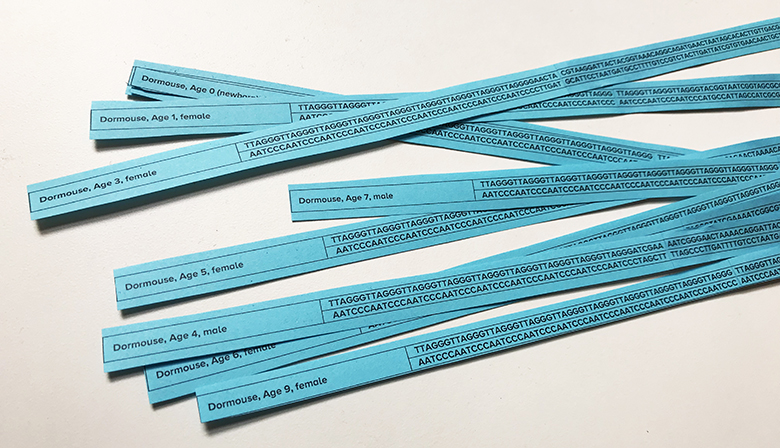
Count the number of times the nucleotide sequence “TTAGGG” repeats on the top at the end of the DNA molecule you are analyzing. TTAGGG does not code for any protein; rather, it represents the telomere. Record this number on the Telomere Analysis Student Worksheet.
Step 2
Working with other people, collect data on telomere repeat sequences for all individual rodents used in this investigation. Record this information on the Class Data Sheet.
Step 3
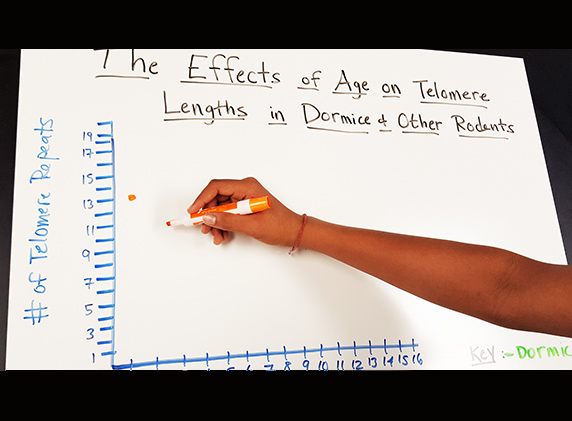
Create a line graph on a large piece of paper or a whiteboard, and label the X-axis “Age (years)” and the Y-axis “Number of Telomere Repeats.” For each rodent analyzed, plot the age and the corresponding number of telomere repeats. Use one color for the edible dormice data, and one color for the related rodent data, and create a key indicating which rodent corresponds to which color.
Lab Discussion Questions
- Look at the edible dormice line in the graph. What trend(s) do you notice as they age?
- Look at the line corresponding to the other rodents in the graph. What trend(s) do you notice as they age?
- How do the telomere lengths of the edible dormice compare to the telomere lengths of the other rodents as they age?
- Based on your data, what inference can you make about the relationship between telomere length and lifespan in edible dormice?
Influences On Telomere Length In Edible Dormice

In the previous activity, you investigated how telomere length changes as edible dormice and related rodents age. Now let’s see how diet relates to telomere length in edible dormice.
Does diet affect telomere lengthening in edible dormice?
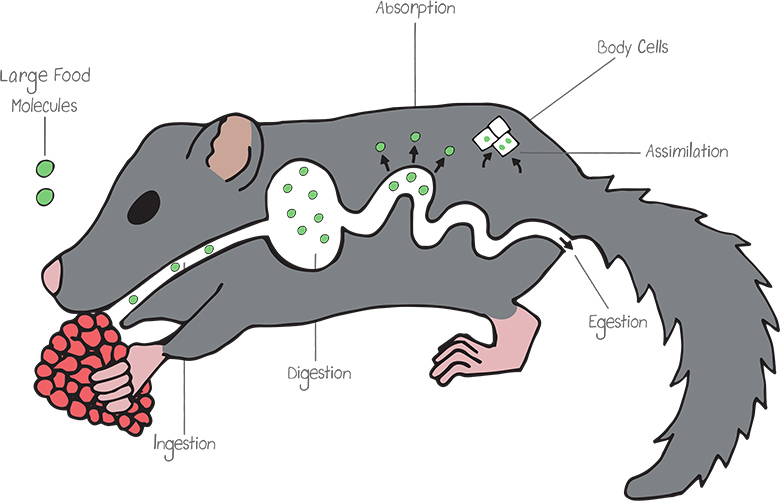
After an edible dormouse eat foods such as grains or fruits, enzymes in its digestive tract break down those complex molecules (carbohydrates) into simpler components—namely glucose, a type of sugar.
In the lab, scientists can measure how recently an animal ate by performing a blood glucose test. The higher the level of glucose in the blood, the more recently the animal ate. If scientists track the blood glucose levels of an organism over time, they can form a pretty good understanding of how well-fed the organism has been. A comparison of glucose levels to telomere length could reveal if there’s a correlation between the organism’s diet and the length of its telomeres.
Your Task
As a molecular biologist studying telomeres in edible dormice, you will collect blood samples from a population of eight-year-old edible dormice fed different diets. Then you’ll chemically analyze their blood glucose levels and telomere lengths to determine if there is a possible association between diet and telomere length.
Materials
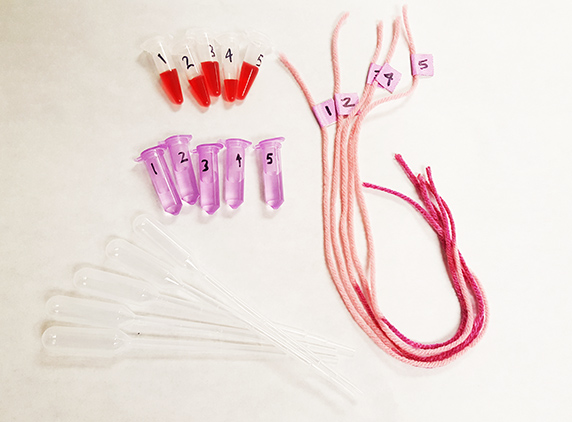
This activity requires some preparatory work on the part of the educator. Please refer to the Materials Prep Guide in the Educator’s Toolbox for more detailed instructions. The procedure described below is intended for student use.
- Numbered vials of simulated edible dormouse blood – one per person
- Numbered “GTI” (for Glucose Test Indicator) vials – one per person
- Plastic pipettes or eye droppers
- Colored pencils
- “Dormouse Telomeres” (yarn) – one string per person
- Ruler
- Colored Blood Glucose Indicator Scale
- Blood Analysis Student Worksheet
Safety Considerations
Goggles should be worn and food and drink should not be consumed during the investigation.
Lab Discussion Questions
- What did the blood glucose test suggest about your dormouse’s diet?
- Is there an association between blood glucose level and telomere length? If so, support your claim with evidence.
- Listen to this discovery discussed on Science Friday. How does it compare with your findings? What new things did you learn?
The Fountain Of Youth
The Methuselah Mouse Prize is a scientific award designed to encourage researchers to search for life extension therapies in mammals by using lab mice as experimental organisms. Some scientists think that the knowledge gained from this research could one day be applied to humans. One of the recipients of this award found that reducing mice’s caloric intake slowed down aging.
Take a closer look at the paper.
- How does this finding compare to the results you observed in edible dormice in the last activity?
- Propose an explanation for this research team’s finding.
- Based on the results of your edible dormouse investigations, predict if you would expect to find similar results in humans, and explain why or why not.
Edible Dormouse In Children’s Literature
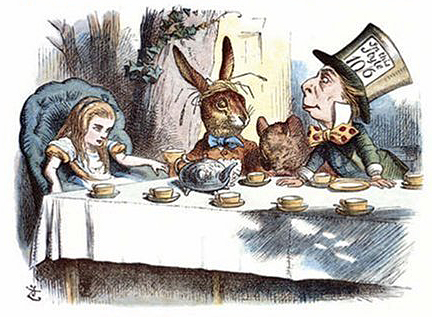
There was a table set out under a tree in front of the house, and the March Hare and the Hatter were having tea at it: a Dormouse was sitting between them, fast asleep, and the other two were using it as a cushion, resting their elbows on it, and talking over its head. `Very uncomfortable for the Dormouse,’ thought Alice; `only, as it’s asleep, I suppose it doesn’t mind.’
—Alice in Wonderland, Chapter 10: A Mad Tea-Party
Why was the dormouse in Lewis Carroll’s “Alice’s Adventures in Wonderland” almost always asleep? Because it was modeled after the real edible dormouse, which sleeps an average of six months a year, and up to 11 months a year when food is scarce!
Edible dormice truly are unique organisms. They seem to defy aging, hibernate for much of the year, and may hold secrets to the “Fountain of Youth.” Are you still curious about these critters? Learn more about edible dormice by researching the following:
- In 1819, Washington Irving wrote the fictitious short story “Rip Van Winkle,” about a man who slept for 20 years. Are edible dormice the real-life equivalent of Rip Van Winkle, or is there an organism with a longer hibernation or dormancy period?
- Does the long dormancy period of edible dormice contribute to their telomeres lengthening?
- Are edible dormice the only organisms on earth whose telomeres lengthen as they age?
Next Generation Science Standards
LS3.A: Inheritance of Traits
Not all DNA codes for a protein; some segments of DNA are involved in regulatory or structural functions.
Common Core State Standards
ELA-Literacy.RST.11-12.9
Synthesize information from a range of sources (e.g., texts, experiments, simulations) into a coherent understanding of a process, phenomenon, or concept, resolving conflicting information when possible.
Many illustrations in this piece were done by Carrie Lapolla.
Educator's Toolbox
Meet the Writer
About Rebecca Brewer
Rebecca Brewer is a high school biology teacher at Troy High School in Michigan. With more than 18 years of experience in the classroom, Rebecca takes a constructivist approach to instruction, which emphasizes student-led learning. She has won several local and national teaching awards and is the director of the Outstanding Biology Teacher Award program for Michigan.
